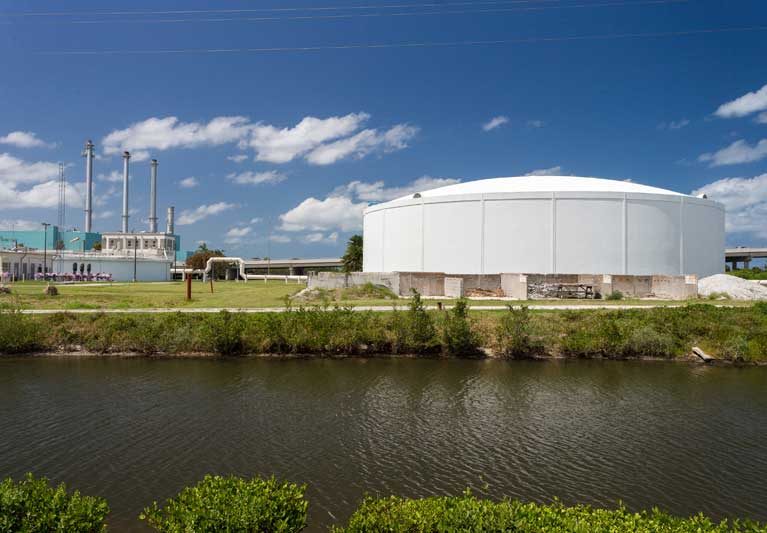
Would consolidating Vero Beach’s municipal wastewater operations with those of Indian River County be the most cost effective and best option for taxpayers?
The Vero Beach Utilities Commission has pressed city staff to leave no stone unturned in exploring a partnering option before building and independently operating a new multi-million-dollar inland site away from the lagoon.
The vote came nearly a month after the Vero Beach City Council issued a similar unanimous policy directive explicitly expressing its desire to relocate the city’s unsightly wastewater treatment plant from the Indian River Lagoon as soon as possible, following speculation city staff was looking for ways to renovate the aging facility.
The council also asked staff to open a dialogue with the county to gauge if that jurisdiction is interested in taking over the city’s wastewater operation at an inland site.
“It has to be fully vetted in an objective manner,” commission Vice Chairman Robert Auwaerter said.
To hammer home the importance of properly examining partnering with the county, Auwaerter presented the commission with three studies that outlined the benefits other jurisdictions experienced from making such a move.
“In any business where you have a large amount of fixed costs like you do with water or electric, you can do better if you spread those costs over a wider revenue base,” Auwaerter said.
Auwaerter presented studies from the U.S. Water Alliance, the Metropolitan Council – a regional planning organization for the seven-county Minneapolis-St. Paul area – and the National Governors Association. Each study researched numerous wastewater consolidations with other jurisdictions and their payoffs, including financial and environmental.
“Potential financial benefits from water utility consolidation include economy of scale and operating efficiencies, increased access to capital, lower costs, lower or equal customer rates for a specified level of service, level of stability, reduced exposure to regulatory penalties – which is something we’re concerned about given the situation with the lagoon – improved planning and risk management, and potential increased opportunities for economic development,” Auwaerter said, citing the U.S. Water Alliance study.
The county two weeks ago initiated the first meeting with city staff.
“We had a meeting with the county last week just as kind of an ice breaker,” Utilities Director Rob Bolton said. “It was actually dealing with the franchise (agreement).”
The city and county’s franchise agreement lapsed in recent years when the city experienced turn over in top administrators, essentially icing talks, County Administrator Jason Brown said, adding now that the city has hired a new city manager and city attorney, it’s time to negotiate an agreement. A franchise agreement doesn’t make the city’s wastewater utility more valuable in the event of a sale, but ensures the city will provide county rates to unincorporated county customers it serves, Brown said.
County and city officials last week met again to talk strictly consolidation options. It’s still unclear how long talks will take, but any outcome must be considered by the county’s governing board, Brown said.
“The City Council has given them direction to talk to us and we’re happy to exchange information, but at a certain point, I’m going to have to get direction from the Board of County Commissioners on what might be possible from the county’s standpoint,” Brown said.
The possible economic, financial and rate pitfalls or benefits of consolidation also remain unclear.
“There are a whole lot of unknowns,” Bolton said.
Bolton estimates the price tag to decommission the riverfront plant and construct a new state-of-the-art sewer plant at the airport would be about $50 million. A new plant would take more than two years to construct and could be operational by 2024 or 2025, Bolton has said.
The existing plant, designed to treat 4.5 million gallons per day, was built in 1977 to replace an obsolete 1958 plant that treated 2.2 million gallons a day. Bolton, who has also been researching grant and financing opportunities, believes the city could qualify for state grants and potentially a .17-percent interest rate to borrow money for a new plant, he said.



